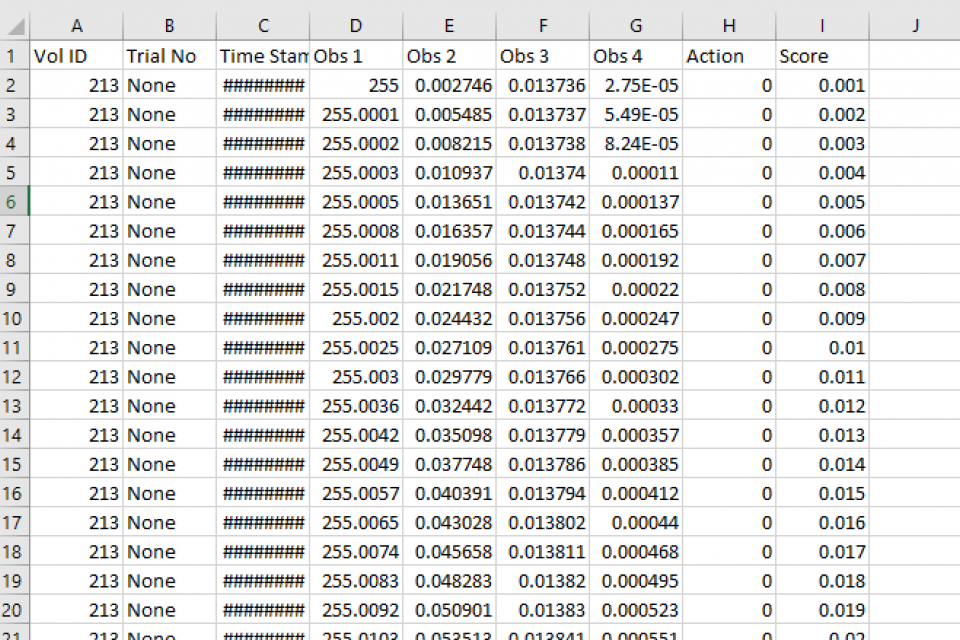Datasets
Standard Dataset
Human decision-making data in the cart-pole game
- Citation Author(s):
- Submitted by:
- Aadhar Gupta
- Last updated:
- Mon, 07/08/2024 - 15:58
- DOI:
- 10.21227/zet8-tx79
- Data Format:
- Research Article Link:
- License:
 39 Views
39 Views- Categories:
- Keywords:
Abstract
The instantaneous state (situation) of the game was constituted by four values: the cart position, the cart speed, the pole angle to the vertical axis, and the pole angular velocity.
For each action taken by the human player in the game, a tuple containing the four values representing the current game situation, along with the action and reward obtained (utility), is recorded as a situation-decision-utility (SDU) tuple.
3 types of actions have been recorded: Move left (-1), move rght (1) and no action (0).
The cart-pole position and velocity are expressed in terms of pixels whereas the pole angle and angular velocity are expressed in terms of radians.
The cart-pole game: The source code for the cart-pole game used to collect the data is available at https://drive.google.com/drive/folders/1ug69x2vz3Gb4EYhjIv6gMiRZlZ9hQOzz....
A total of 10 Excel files containing 10 human players' cart-pole decision-making data.
Each Excel file contains two sheets, one corresponding to the training session comprising 10 game episodes, and the other corresponding to the testing session comprising a single episode.
Ten data files named in ascending order of the game score earned in the test trial of cartpole gamplay.
Dataset Files
- data_human_1.xlsx (9.00 MB)
- data_human_2.xlsx (6.60 MB)
- data_human_3.xlsx (7.18 MB)
- data_human_4.xlsx (9.72 MB)
- data_human_5.xlsx (7.61 MB)
- data_human_6.xlsx (6.97 MB)
- data_human_7.xlsx (8.30 MB)
- data_human_8.xlsx (9.38 MB)
- data_human_9.xlsx (11.14 MB)
- data_human_10.xlsx (9.46 MB)






